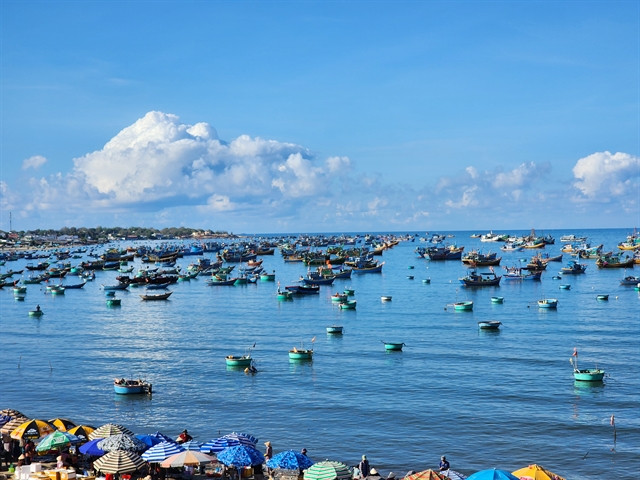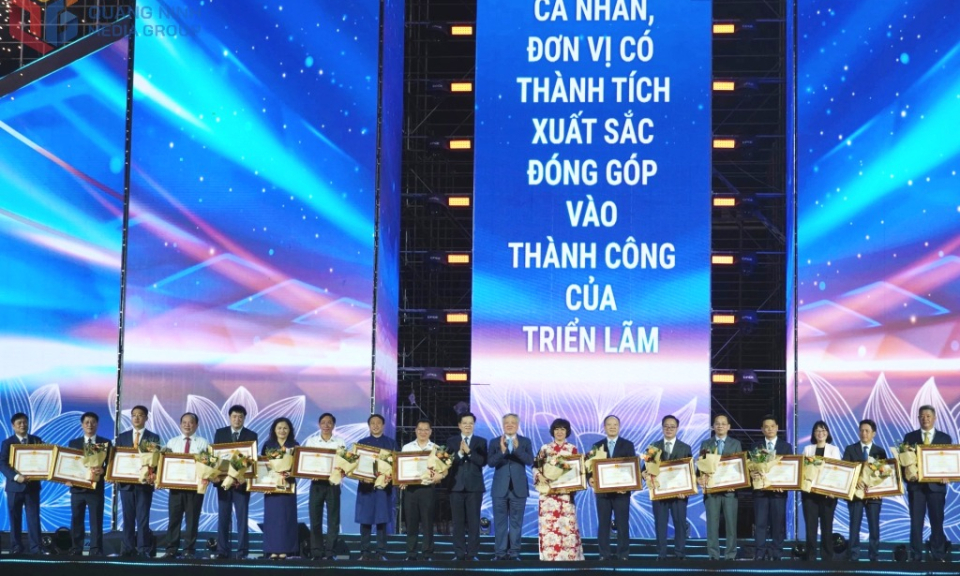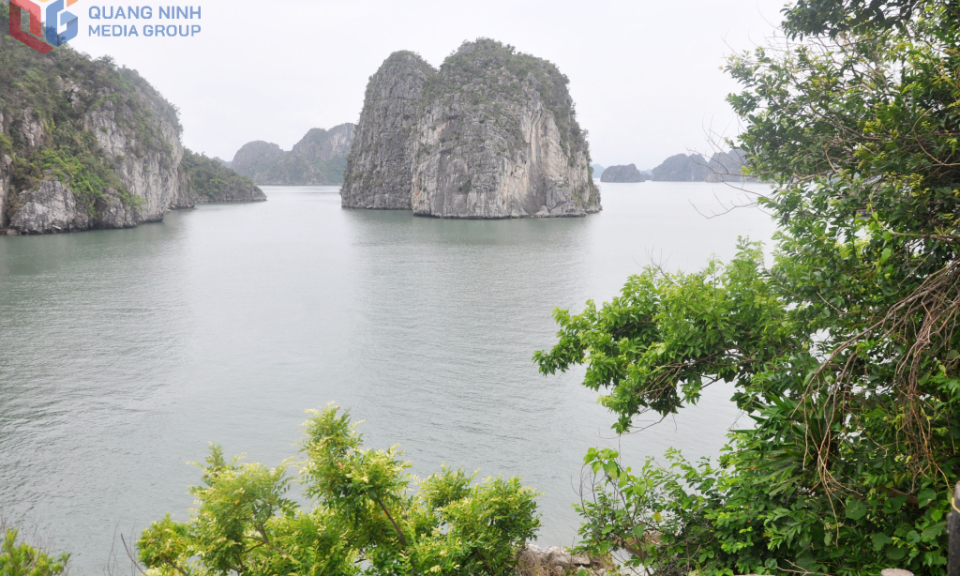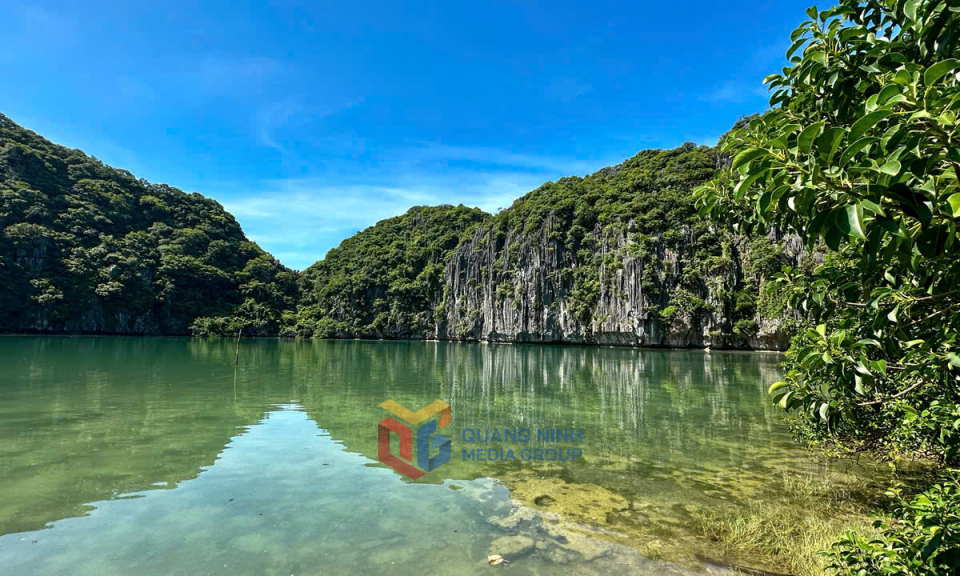National marine plan outlines strategic vision
The national marine plan offers a direction for sustainable exploitation of the seas and the use of marine and island resources, in harmony with any socio-economic developments alongside national defence and security.
Việt Nam's territorial waters are rich in natural resources and hold an important economic, geopolitical, national defence and security position in the region and the world.
However, Việt Nam's seas and islands are facing a series of problems relating to degradation in landscape, marine and coastal ecosystems, coastal environmental pollution and increasing negative impacts from natural disasters, climate change and rising sea levels.
Therefore, a national marine plan is needed to create orientations for sustainable exploitation and use of marine and island resources and harmonise any socio-economic developments with national defence and security.
Effective management, exploitation, use of marine space
Việt Nam has a coastline of over 3,260 km. Its 28 coastal provinces and cities have a population that accounts for more than half of the country's total population, with most of the work force employed in marine-related industries. Việt Nam has huge potential to develop a marine economy such as maritime shipping, mineral exploration and processing, fishing, aquaculture and seafood processing and tourism.
Recognising the role and the significance of the seas and islands for the country's development, the 8th meeting of the 12th Party Central Committee issued Resolution No. 36-NQ/TW dated October 22, 2018 on Việt Nam's Sustainable Marine Economic Development Strategy until 2030, with a vision to 2045, sets the goal of making Việt Nam a strong coastal nation by 2030.
Within the objectives and policies outlined in the Resolution, the Government assigned the Ministry of Natural Resources and Environment to lead the development of the 'National Marine Spatial Planning for the 2021-2030 period, with a vision to 2050'. On June 28 at the 7th session, the 15th National Assembly (NA) approved a resolution on the plan.
The National Marine Spatial Planning for the 2021-2030 period, with a vision to 2050, is for the first time being developed based on reference to international experience, with adjustments to make it suitable to Việt Nam's actual situation.
According to Director of the Vietnam Agency of Seas and Islands under the Ministry of Natural Resources and Environment Nguyễn Đức Toàn, the main objective of the plan is to create a foundation for rapid and sustainable development of the marine economy, contributing to the formation and development of strong marine economic sectors and creating effective livelihoods for the people.
It aims to ensure national defence, security, foreign affairs and international cooperation, firmly maintain independence, sovereignty, sovereign rights and national jurisdiction at sea, efficiently manage and exploit marine resources, protect the marine environment, conserve biodiversity, preserve marine cultural values and gradually turn Việt Nam into a strong prosperous maritime nation thanks to its waters.
Sustainable development
Toàn said that to turn Việt Nam into a strong coastal nation, as set out in Resolution No. 36-NQ/TW, there are development orientations for marine economic sectors, especially new ones.
The planning sets out five key issues and four breakthroughs that have great influence and generate momentum for the country's development.
Specifically, the first key issue is to perfect the institutional framework, policies and develop criteria and regulations to handle issues arising in overlapping areas with contradictions in using marine space.
The planning will perfect policies for the development of clean, renewable energy and new marine economic sectors in line with the implementation of Việt Nam's sustainable marine economic development strategy and issue guidelines and regulations for the implementation of the national marine spatial planning at grassroots levels.
The second focus is to develop marine infrastructure, particularly the key areas such as seaports and routes that connect seaports and inland areas, marine telecommunications and digital economic infrastructure.
It aims to develop synchronously air, rail, road and inland waterway transport systems between coastal and non-coastal localities and with other countries and strongly develop marine economic sectors, especially fisheries associated with marine conservation.
The development of coastal and island urban systems will be also focused on to create strong logistics and economic service centres which are expected to become the driving force for socio-economic development of each region. Comprehensive studies and assessments on potential of marine minerals and clean energy will be conducted, outlining development directions for the exploitation and use of marine minerals and clean energy.
The third focus is to build marine and island cultural institutions, to organise marine cultural activities, improve the cultural and social life of coastal and island residents, organise communication activities and raise awareness and responsibility for building a strong coastal nation, rich from the sea.
The fourth focus is to control and manage waste sources and solve hot spots of environmental pollution at sea, coastal areas and islands, delineate marine and coastal conservation areas and restore degraded ecosystems to increase the area of marine conservation and protection.
The final focus is to intensify the basic investigation of marine resources, environment, and islands, establish a digitised database on the sea, islands, ensuring integrated, shared and updated data and strengthen the training of marine human resources, prioritising renewable energy, tourism, marine science and technology sectors.
Along with that, measures will be taken to strengthen marine scientific research and technology application to serve new and potential marine economic sectors such as marine pharmaceuticals, marine medicine, marine chemistry, and new materials, strongly attract resources from all economic sectors, especially the private and foreign-invested sectors for marine development.
Meanwhile, the planning points out four breakthroughs to be made.
Firstly, Việt Nam will focus on building a system of infrastructure and logistics services associated with the development of the shipbuilding industry and maritime transport - creating a multi-purpose, dual-use, synchronised and modern coastal and island infrastructure which creates a momentum to attract investors and promotes sustainable development.
Secondly, it will develop sustainable, responsible and creative sea and island tourism associated with the development of green and smart island cities.
It will promote the development of a green, circular, low-carbon and a highly resilient aquaculture economy, prioritising the development of offshore aquaculture and fishing, associated with marine conservation and marine culture preservation.
The other breakthrough is the rapid and sustainable development of clean, green marine energy, prioritising the development of offshore wind power, ensuring national energy security, defence and security, and conducting comprehensive researches and assessments of the potential of the oil and gas, solid minerals and construction materials industries on the seabed.






